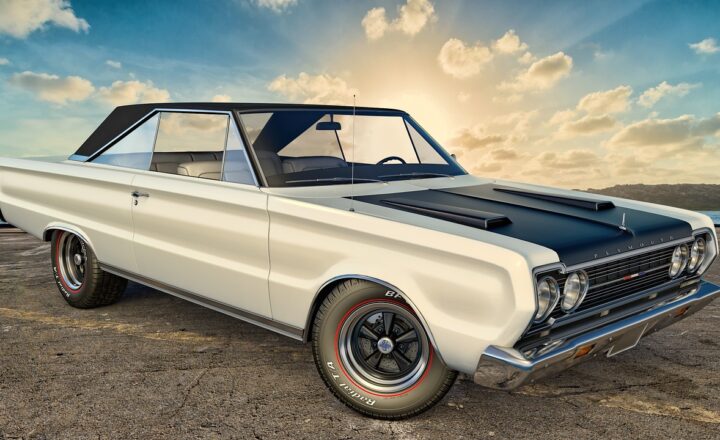The Surprising Ways Car Colors Are Chosen and the Trends They Follow
November 11, 2024

Car colors are an often overlooked aspect of automotive design, yet they play a significant role in consumer choice and market trends. From the sleek blacks to vibrant reds, the color of a car can influence buying decisions and reflect cultural moods and societal changes. Understanding how car colors are chosen and the trends they follow can provide valuable insights into the automotive industry.
1. The Psychology Behind Color Choices
When consumers choose a car, the color can evoke emotions and convey messages about one’s personality. So how does color psychology play into this decision-making process?
- Red: Often associated with excitement and passion, red cars tend to attract attention and express boldness.
- Black: Signifying elegance and sophistication, black is a popular choice among luxury vehicle owners.
- White: This color often symbolizes purity and simplicity, making it a top choice for family vehicles and sedans.
- Gray/Silver: These neutral colors suggest practicality and professionalism, appealing to buyers who prioritize functionality.
As colors can impact consumer perception, automotive manufacturers strategically leverage these psychological associations while designing their vehicle portfolios.
2. Cultural Influences on Car Colors
Cultural trends can substantially impact the popularity of car colors. These shifts can be influenced by various factors, including:
- Fashion Trends: Vehicle colors often mirror fashion industry trends, as consumers tend to gravitate toward colors that are currently in vogue in clothing and design.
- Pop Culture: Movies, celebrities, and even social media can create color fads. For example, the popularity of the “Fast and Furious” franchise saw a surge in demand for high-impact colors.
- Brand Identity: Automakers frequently use colors to reinforce their brand identity, creating signature color palettes that resonate with consumers.
3. Environmental Factors and Sustainability
In recent years, there has been an increased focus on sustainability and eco-friendliness within the automotive industry. This shift is impacting car color choices in several ways:
- Eco-friendly Pigments: Many manufacturers are exploring sustainable paint options made from natural sources, leading to a rise in earthy tones like greens and browns.
- Heat Reflectivity: Lighter colors are gaining popularity in warmer climates as they reflect sunlight and keep vehicles cooler, leading to lower energy consumption for air conditioning.
- Durability & Maintenance: Colors that require less frequent repainting or maintenance are becoming favored as eco-conscious consumers lean towards longer-lasting options.
Environmental awareness is shifting the preferences of buyers, opening the market to a more diverse range of color options.
4. Seasonal and Regional Preferences
Regional trends can dictate which car colors are popular in specific markets. For example:
- Climate Considerations: In colder regions, darker colors may dominate the market due to their better representation of dirt, while sunny, warm regions may favor lighter, more reflective hues.
- Local Influences: Urban areas may see a preference for bold, eye-catching colors due to dense traffic and the desire to stand out, whereas rural areas may lean toward more conservative tones.
5. The Rise of Customization and Personal Expression
As car ownership evolves into a statement of individuality, there’s been a growing demand for personalized car colors. The rise of customization has led to:
- Wraps and Finishes: Car wraps allow owners to choose any color or pattern they desire, leading to vibrant and unique designs.
- Limited Editions: Automakers often release special edition vehicles with exclusive colors, allowing consumers to express uniqueness.
- Consumer Choice: More automobile brands are providing extensive palettes of color choices, enabling consumers to feel empowered in their decision-making.
Overall, customization is a growing trend that enables consumers to express their personalities while influencing color choices in the automotive market.
6. Future Trends in Car Colors
As we look ahead, a few emerging trends in car colors can be anticipated:
- Smart Colors: Innovations in technology may lead to color-changing vehicles, allowing owners to alter their car’s color at will.
- Metallic and Multi-layer Paints: These are becoming more popular, offering visual depth and richness that appeal to high-end consumers.
- Retro Shades: Nostalgic colors from past decades may make a comeback, reflecting a desire for familiarity in uncertain times.
Consumers can expect automotive manufacturers to adapt and innovate in response to changing tastes and cultural influences.
Conclusion
Car colors are more than just aesthetic choices; they are reflections of societal values, cultural trends, and individual preferences. Understanding the factors dictating color preferences can provide insight into consumer behaviors and automotive market dynamics. Amidst evolving trends, it remains crucial for manufacturers to adapt to the continually changing landscape of color choices, ensuring they remain relevant and appealing to diverse customer bases.
Whether you drive a bold red sports car or a sophisticated black sedan, your choice in color speaks volumes about who you are and the environment in which you live.








